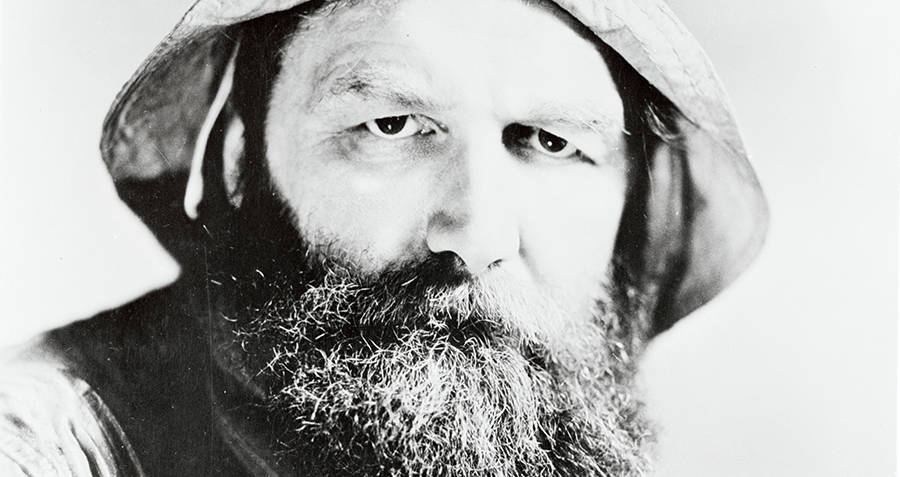Whether exploring the Arctic or fighting the Nazis, Peter Freuchen did it all.

YouTubePeter Freuchen
The shortlist of Peter Freuchen’s accomplishments includes escaping an ice cave armed with his bare hands and frozen feces, escaping a death warrant issued by Third Reich officers, and being the fifth person to win the jackpot on the game show The $64,000 Question.
However, the life of adventurer/explorer/author/anthropologist Peter Freuchen can hardly be contained in a short list.
Freuchen was born in Denmark in 1886. His father was a businessman and wanted nothing more than a stable life for his son. So, at his father’s behest, Freuchen enrolled at the University of Copenhagen and began to study medicine. However, before long Freuchen realized that a life indoors was not for him. Where his father craved order and stability, Freuchen craved exploration and danger.
So naturally, he dropped out of the University of Copenhagen and began a life of exploration.
In 1906, he made his first expedition to Greenland. He and his friend Knud Rasmussen sailed from Denmark as far north as possible before leaving their ship and continuing by dogsled for over 600 miles. On their travels, they met and traded with the Inuit people while learning the language and accompanying them on hunting expeditions.

TeakDoorPeter Freuchen, standing next to his third wife, wearing a coat made out of a polar bear he killed.
The Inuit people hunted walruses, whales, seals, and even polar bears, but Freuchen found himself right at home. After all, his 6’7 stature made him uniquely qualified to handle taking down a polar bear, and before long he had made himself a coat out of a polar bear he’d killed himself.
In 1910, Peter Freuchen and Rasmussen established a trading post, in Cape York, Greenland, naming it Thule. The name came from the term “Ultima Thule,” which to a medieval cartographer meant a place “beyond the borders of the known world.”
The post would serve as a base for seven expeditions, known as the Thule Expeditions, that would take place between 1912 and 1933.
Between 1910 and 1924, Freuchen lectured visitors to Thule on Inuit culture, and traveled around Greenland, exploring the previously unexplored Arctic. One of his first expeditions, part of the Thule Expeditions, was embarked upon to test a theory that claimed a channel divided Greenland and Peary Land. The expedition involved a 620-mile trek across the icy Greenland wasteland that culminated in Freuchen’s famous ice cave escape.
During the trip, which Freuchen claimed in his autobiography Vagrant Viking was the first successful trip across Greenland, the crew got caught in a blizzard. Freuchen attempted to take cover under a dogsled, but ultimately found himself completely buried in snow that quickly turned to ice. At the time, he hadn’t been carrying his usual assortment of daggers and spears, so he was forced to improvise — he fashioned himself a dagger out of his own feces and dug himself out of the cave.

YoutubePeter Freuchen with an Inuit man on one of the Thule expeditions.
His improvisation continued when he returned to camp, and found that his toes had become gangrenous and his leg had been taken over by frostbite. Doing what any hardened explorer would do, he amputated the gangrenous toes himself (sans anesthesia) and had his leg replaced with a peg.
From time to time, Freuchen would return home to his native Denmark. In the late 1920s, he joined the Social Democrats movement and became a regular contributor to Politiken, a political newspaper.
He also became the editor-in-chief of Ude of Hjemme, a magazine owned by the family of his second wife. He even became involved in the film industry, contributing to the Oscar-winning film Eskimo/Mala the Magnificent, which was based on a book written by him.
During World War II, Peter Freuchen found himself in the center of political drama. Freuchen never tolerated discrimination of any kind, and any time he heard someone express anti-Semitic views, he would approach them and, in all his 6’7″ glory, claim to be Jewish.
He was also actively involved with the Danish resistance and fought Nazi occupation in Denmark. In fact, he was so boldly anti-Nazi that Hitler himself saw him as a threat, and ordered him arrested and sentenced to death. Freuchen was arrested in France, but ultimately escaped the Nazis and fled to Sweden.
During his busy and exciting lifetime, Peter Freuchen managed to settle down three times.

YouTubeFreuchen with his first wife.
He met his first wife while living in Greenland with the Inuit people. In 1911, Freuchen married an Inuit woman named Mequpaluk and had two children with her, a son named Mequsaq Avataq Igimaqssusuktoranguapaluk and a daughter named Pipaluk Jette Tukuminguaq Kasaluk Palika Hager.
After Mequpaluk succumbed to the Spanish Flu in 1921, Freuchen married a Danish woman named Magdalene Vang Lauridsen in 1924. Her father was the director of Denmark’s national bank and her family owned the Ude of Hjemme magazine that Freuchen would ultimately run. Freuchen and Lauridsen’s marriage would last 20 years before the pair split.
In 1945, after fleeing the Third Reich, Freuchen met Danish-Jewish fashion illustrator Dagmar Cohn. The pair moved to New York City to escape Nazi persecution, where Cohn had a job working for Vogue.

Portrait of Peter Freuchen
After he moved to New York, Peter Freuchen joined the New York Explorer’s Club, where a painting of him still hangs on the wall amongst the taxidermied heads of exotic wildlife. He lived out the rest of his days in relative quiet (for him) and eventually passed away at the age of 71 in 1957, three days after completing his final book Book of the Seven Seas.
His ashes were scattered over Thule, Greenland, where his life as an adventurer began.
After learning about the unbelievable life of Peter Freuchen, read about the explorers who found a 106-year-old fruitcake in the Antarctic. Then, read about history’s greatest humanitarians.






